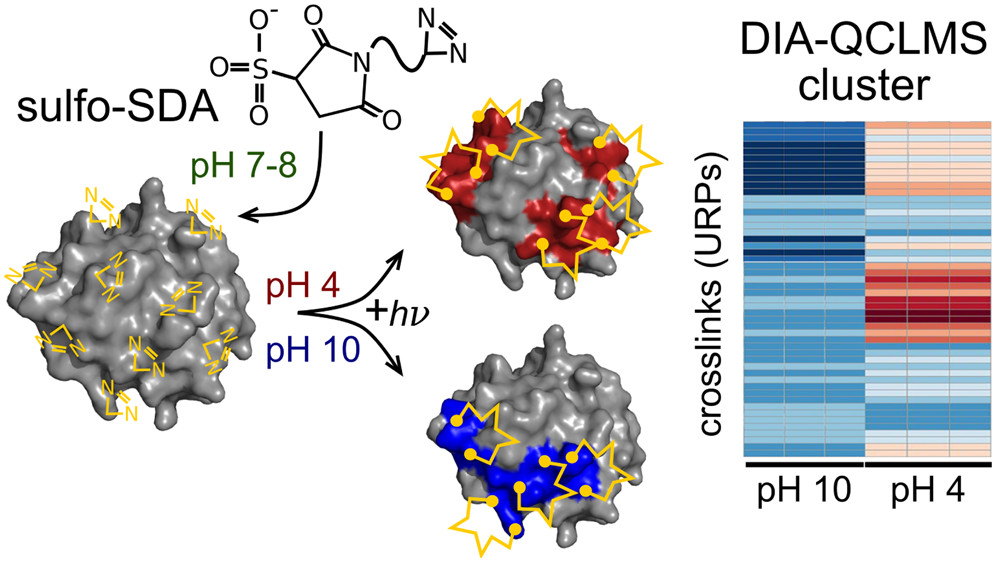https://doi.org/10.1021/acs.analchem.9b01339
Protein structures respond to changes in their chemical and physical environment. However, studying such conformational changes is notoriously difficult, as many structural biology techniques are also affected by these parameters. Here, the use of photo-crosslinking, coupled with quantitative crosslinking mass spectrometry (QCLMS), offers an opportunity, since the reactivity of photo-crosslinkers is unaffected by changes in environmental parameters. In this study, we introduce a workflow combining photo-crosslinking using sulfosuccinimidyl 4,4′-azipentanoate (sulfo-SDA) with our recently developed data-independent acquisition (DIA)-QCLMS. This novel photo-DIA-QCLMS approach is then used to quantify pH-dependent conformational changes in human serum albumin (HSA) and cytochrome C by monitoring crosslink abundances as a function of pH. Both proteins show pH-dependent conformational changes resulting in acidic and alkaline transitions. 93% and 95% of unique residue pairs (URP) were quantifiable across triplicates for HSA and cytochrome C, respectively. Abundance changes of URPs and hence conformational changes of both proteins were visualized using hierarchical clustering. For HSA we distinguished the N–F and the N–B form from the native conformation. In addition, we observed for cytochrome C acidic and basic conformations. In conclusion, our photo-DIA-QCLMS approach distinguished pH-dependent conformers of both proteins.


